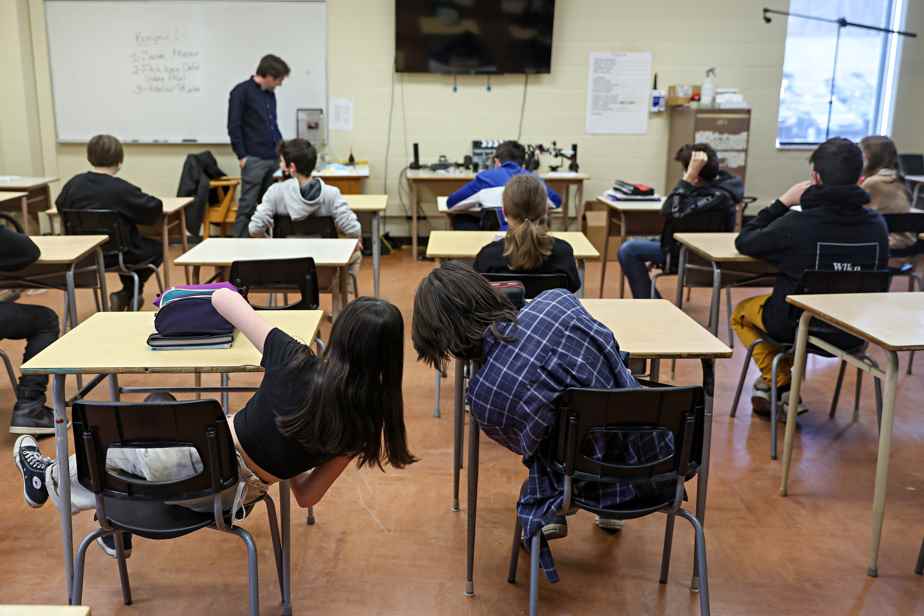In 2018, I proposed to subsidize 100% private schools that would waive the selection of their students.
Posted yesterday at 2:00 p.m.
This proposal was accompanied by a provision that renewed the governance of these schools and their legal status as such: non-profit corporations managed by an independent board of directors, as in the CPEs. It kept the same trade unions in place.
These so-called subsidized and free private schools also had to sign a five-year commitment according to which they shared human and financial resources with the schools of the public network and ensured the representativeness of the students of the territory in the composition of its student population.
Private schools that refuse these conditions would then gradually no longer receive a state subsidy.

PHOTO ROBERT SKINNER, LA PRESSE ARCHIVES
The School Together movement unveiled its plan for a common school network, which aims to ensure equal opportunities in education, on May 9, at the Maison du développement durable in Montreal.
I also proposed that the network of public schools increase the possibility for all students to enroll in specific projects that correspond to their talents and their motivation, and this, without selection based on academic performance. I took up this suggestion quite recently.1.
This is essentially what the School Together movement in turn proposes to us in its Plan for a common school network.2.
The School Together Movement Plan
This recently unveiled plan is more solidly documented than mine, is inspired by the progress of the network of Finnish schools and also receives the support of many experts from the world of education. It also takes advantage of the most recent cartographic technologies capable of redesigning our school territories in order to ensure an optimal social and economic mix.
Political parties should now be judged on their position on this important issue of educational equity that the École ensemble movement defends.
They now have a single, solid, credible and indispensable plan on which to build.
Use teachers’ limited energy effectively
This plan would ease the burden on public teachers who find themselves faced with increasingly stripped classrooms of those high achievers who lift others up.
The greater the exodus of high-performing students to selective schools or programs, the greater the ratio of students with special needs in their classes. This requires that a large part of their energy be invested in managing the social climate of their class rather than on the learning of each of their students. The risk can then change from a legitimate and motivating desire to ensure the success of all their students to a constant concern to avoid the worst.
Private school teachers can testify to this too often underestimated facet of the social climate as a factor in the success of their students.
Decrease selection pressure
This reform proposed by the École ensemble movement would also contribute to reducing the stress associated with selection in private schools or in specific programs.
This stress contaminates both the lives of parents and children. For middle-class parents, this often represents a heavy financial strain, or debt, and an often pervasive anxiety about the challenge of shopping for the (in their eyes) ideal school and their child’s ability to to be admitted there. Academic excellence in the minds of parents is so nested in selective schools that it becomes an element of pressure from the end of their child’s first primary cycle. And even before.
This is not without inducing in the child an increasingly present weight while the pleasure of learning, of discovering, of developing should take all the place at this young age.
Simply: for children
Above all, it is the community of children who would benefit from this reform: interesting, efficient, attractive and nearby schools in the neighborhood, classes in which the climate encourages children to surpass themselves, a diversity of options in the choice of learning individuals and a school environment that escapes the fracture of socio-economic selection.
Several years ago, when I was beginning to think about this approach to a common school, a former minister with whom I was discussing it was scandalized and replied: “Selective private schools are excellence ! Why deprive yourself of excellence? I would have liked then to have had the presence of mind to answer him: “Why aim for excellence in only a minority of schools or programs; it lacks so much ambition. We must strive for excellence for each of our schools, for each of our children! »

